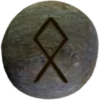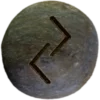Last Updated on May 31, 2025
Table of Contents


A Welcoming State
Florida and Asatru share a unique spiritual bond. Asatru, a modern revival of ancient Norse paganism, finds fertile ground in Florida’s diverse cultural and spiritual landscape. Many Floridians seek personal connection with nature, ancestors, and the old gods. This powerful faith offers these connections with a focus on honoring traditions, rituals, and community.
Modern Asatru in the state dates back to the 1970s. This period marked a rise in neo-pagan movements across the U.S. Floridians, open to alternative paths, helped establish kindreds (local groups). These kindreds create places where people share lore, perform blóts (sacrifices or offerings, pronounced “BLOHT”), and celebrate seasonal festivals like Yule and Midsummer.
The sunshine and climate allow for outdoor gatherings year-round. This supports Asatru’s emphasis on being outside and connected to the land. Kindreds often meet in state parks, private groves, or beaches. Fires, mead, and storytelling bring people together under starlit skies. These moments strengthen communal bonds and spiritual devotion.
Asatru is not about conversion. It does not recruit. It welcomes those who feel called to the old ways. Florida’s transient population includes seekers from across the country. Some discover the faith here for the first time. Others bring it with them. This steady flow of practitioners helps maintain active kindreds throughout the state.
Asatru in Florida’s Communities
Kindreds exist across Florida—from Miami to Jacksonville, from Tampa Bay to Tallahassee. Each one follows its own traditions, but all honor core values. These values include hospitality, truth, loyalty, and courage. The Nine Noble Virtues, inspired by historical sources, guide many in the community. These virtues support personal integrity and group harmony.
Gatherings range from small, intimate rituals to large public events. The annual Florida Pagan Gathering (FPG) often includes Asatru participants. They host workshops, rituals, and discussions about Norse cosmology and runes. These public events help demystify Asatru for newcomers and build bridges with other spiritual groups. ![]()
Runes, ancient symbols used in writing and divination, are central to many rituals. Practitioners carve runes into wood or stone. They chant their names and meditate on their meanings. This practice strengthens ties to ancestors and the ancient wisdom they passed down.
Florida’s multiculturalism blends well with this polytheistic nature. The faith allows space for different interpretations and cultural expressions. Some kindreds focus on historical reenactment. Others blend modern living with spiritual depth. All honor the gods with sincerity.
Séríslenskur (pronounced “SEHR-ees-lens-kur”) letters like “ð” and “þ” also appear in Asatru texts. “Þ” (thorn) sounds like “th” in “Thor.” “Д (eth) sounds like “th” in “feather.” These letters, preserved in Icelandic, connect modern Asatru to its roots. Iceland legally recognized them in 1973. Florida’s Asatruar often look to Iceland for inspiration and legitimacy.
As Florida’s spiritual scene grows, Asatru continues to thrive. The state’s freedom of religion, its natural beauty, and its welcoming communities all support this path. From rituals under palm trees to runic studies in suburban libraries, the faith lives fully in Florida.
Runes Associated with The Asatru of Florida
The Elder Futhark rune Laguz (ᛚ, pronounced “LAH-gooz”) symbolizes water, intuition, and flow, reflecting Florida’s oceans and rivers as spiritual inspirations. ![]()
The rune Othila (ᛟ, pronounced “OH-thil-ah”) represents heritage, home, and community. It embodies Florida’s role in preserving and nurturing Norse traditions.
Its Importance to Practitioners
Florida serves as a beacon for Asatruar, providing spaces for celebration, education, and community-building. Its natural beauty enhances ritual meaning.
The state’s active groups strengthen cultural identity and promote unity, ensuring ancient practices remain relevant in today’s world.


